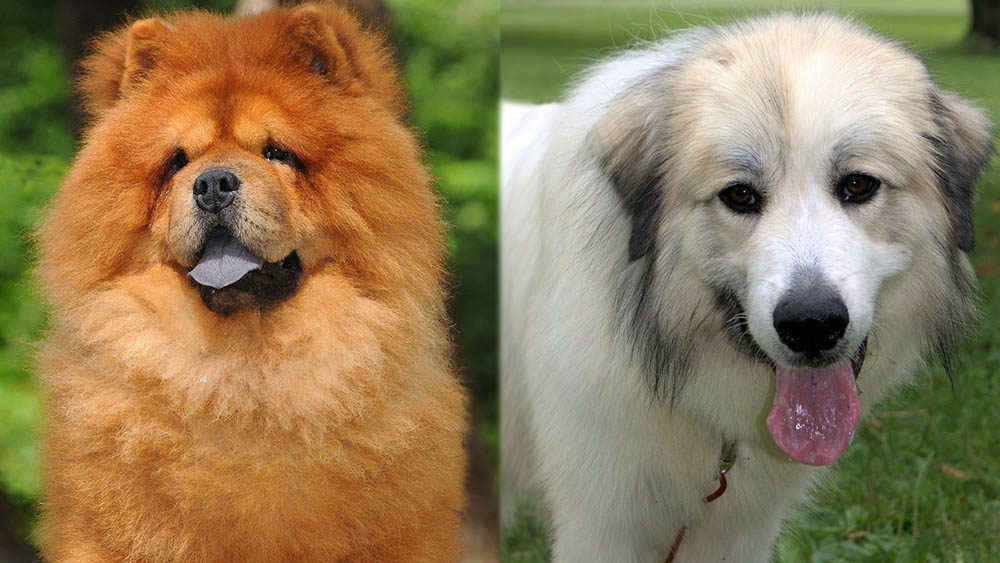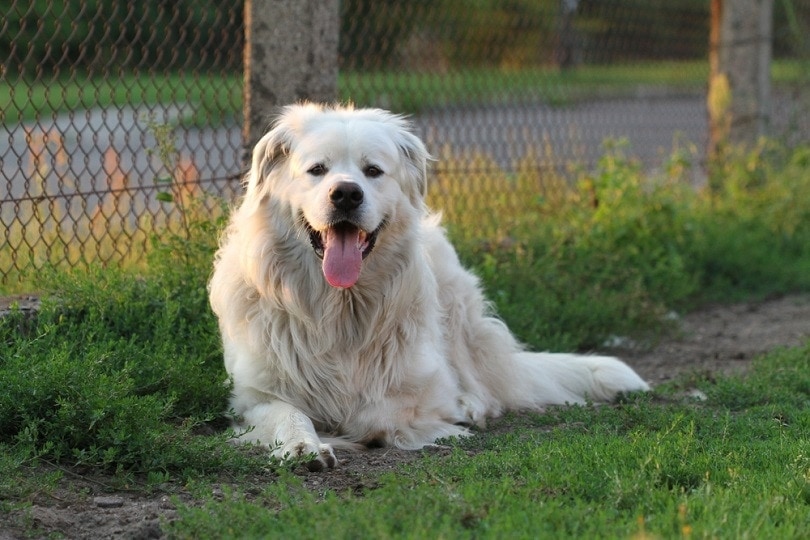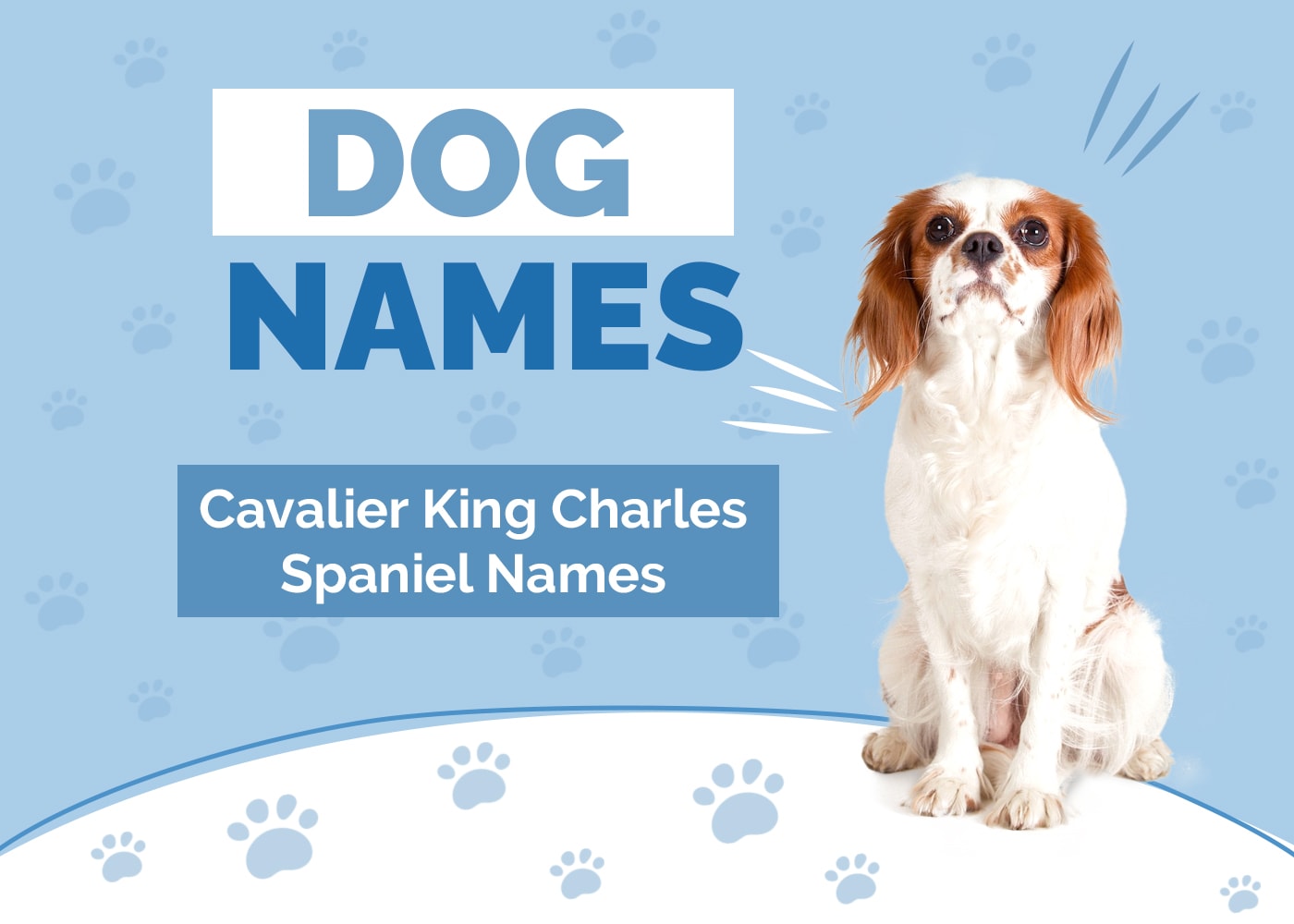Chow Chow Great Pyrenees Mix: Pictures, Care Guide, Temperament & Traits

Updated on

The Chow Chow Great Pyrenees Mix is a cross of two breeds—the Chow Chow and the Great Pyrenees. These two dogs come from very different areas of the world: the Chow Chow from China and the Great Pyrenees from the Pyrenees Mountains of France and Spain.
However, they do have similar backgrounds, both having been bred to aid farmers in livestock guarding and other general duties. They also both have high grooming requirements and can be quite independent breeds, which means training requires greater consistency and patience, and this hybrid pooch might not be suitable for some first-time owners.
Breed Overview
| Height: | 22–28 inches |
| Weight: | 60–120 pounds |
| Lifespan: | 10–15 years |
| Colors: | Being, brown, white, tan |
| Suitable for: | Experienced owners looking for an active dog that enjoys being outdoors |
| Temperament: | Loyal, loving, active, stubborn |
The cross is also known as the Chownees and is a large fluffy breed that is generally considered to be a very good family pet. However, with that appealing fluffiness does come a reasonable grooming requirement which means you will be kept busy with a grooming brush and a vacuum.
The Chow Chow Great Pyrenees Mix combines two dogs that were first bred as working dogs. In fact, both dogs were raised to guard livestock as well as for herding and other farm duties. The Chow Chow does temper the size of the Great Pyrenees somewhat, but you should still expect a large dog.
Chow Chow Great Pyrenees Mix Characteristics
Chow Chow Great Pyrenees Mix Puppies

Chow Chow Great Pyrenees puppies are quite rare. The two breeds come from different parts of the world, and both are fairly uncommon breeds themselves, although the Great Pyrenees especially has enjoyed a surge in popularity in recent years. Accidental breeding is unlikely, but you may be able to find some breeders that are offering this unusual pairing. Because prices of mixed breeds are lower than the cost of purebred puppies, though, supply will likely remain low.
The scarcity of the crossbreed also makes it unlikely that you will find any of these puppies in shelters, but it is worth looking. Former owners may have been surprised by the eventual size of the dog and surrendered it because it got too big. Or, they may have given the dog up because it barked a lot. If you do adopt, try to get as much information from the rescuer as possible, especially regarding the dog’s background and any interactions it has had with people, other dogs, and cats.

Temperament & Intelligence of the Chow Chow Great Pyrenees
As a mixed breed, the Chow Chow Great Pyrenees Mix combines the attributes of two parent breeds: the Chow Chow and the Great Pyrenees. This means that some attributes of the mix will lean towards one breed while others will be more like the other parent breed.
Breeds are usually mixed intentionally as a means to iron out some of the potential issues that may arise with a certain breed. For example, Poodles are crossed with long-haired and heavy-shedding dogs to try and create breeds with the intelligence and low-shedding nature of the Poodle combined with the positive attributes of another breed.
The introduction of the Great Pyrenees means that the resulting mix will likely be friendly and loving, while the Chow Chow helps counter the large size of the Pyrenees. Both breeds are known to be intelligent, but are also both independent and they can be stubborn, so you should expect the hybrid to have a strong mind of its own.
Both breeds are guardian dogs, which means they can be distrusting of strangers, but they get along well with family members, and the Great Pyrenees is especially known for getting on with other animals.
Are These Dogs Good for Families? 👪
The Chow Chow is a loyal dog, but it isn’t the kind to be overly affectionate. It may guard you and your family, but its independence means it is more likely to be found on the other side of the room rather than on the couch or lying on the floor in front of your feet. For some families, this can be a blessing. The Great Pyrenees is also an independent breed, but it is affectionate with family and friends and gentle and understanding with children.
Whether your Chow Chow Great Pyrenees mix is affectionate or not will depend on which parent breed it takes after, but it is more likely to lean towards the affectionate side, and both breeds are generally considered safe for children.
Does This Breed Get Along with Other Pets?
Dog friendliness is a similar story to family friendliness. The Chow Chow tends to be aloof and will need early socialization to prevent the Chow from being aggressive with other dogs. You can introduce them to other family dogs when they are young, and carefully to cats at the same age. The Great Pyrenees tends to be friendly with other dogs and is considered a good breed for families that already have cats at home.
Early socialization and careful introductions are still important, but these should go more easily than with a Chow Chow. Again, your cross is more likely to tend towards friendliness, but you will want to socialize your young dog to ensure that it gets along with other animals.
Things to Know When Owning a Chow Chow Great Pyrenees Mix:
The Chow Chow Great Pyrenees Mix is a cross of two working breeds, both of which are independently minded and have high grooming requirements. Although this mixed breed can display the characteristics of either parent breed, because the two do share certain similarities, there are some things we know about this mixed breed.
Food & Diet Requirements 🦴
The diet you give your dog should depend on its age and size, as well as physical activity level and any ailments or physical conditions it suffers. You will likely need to feed approximately two cups of high-quality dry kibble to this breed. Alternatively, weigh your dog and follow the manufacturer’s guidelines on the appropriate amount to feed. You can also combine dry and wet food.
However, you should always ensure that you are not overfeeding. Obesity is a serious problem for dogs, just as it is for people, and it can take years off a dog’s life.
Exercise 🐕
Both parent breeds are working dogs, although neither would have been used for long periods of exertion. Guarding flocks tends to mean sitting and watching, staying mentally alert, and only running when any potential danger is present. As such, while these dogs do benefit from time outdoors and need exercise to stay healthy, you won’t need to go running with them.
Expect to walk your Chow Chow Great Pyrenees mix for at least 60 to 90 minutes a day. You can also look into certain canine sports that not only provide physical exercise but also offer mental stimulation to your dogs, too.
Training 🎾
Both parent breeds are considered intelligent, but both are independent, too. As livestock guardians, they would have been left in the fields to tend the flock, without human company. They would have assessed any potential threats and taken action immediately without the need for the farmer to give instructions. This independent streak does remain, and it means that training the breed can be a challenge.
Keep training sessions short, use positive reinforcement, and be consistent and persistent in your training efforts.
You should also offer your dog socialization from a young age, and one way to start this is through puppy classes. This enables you to socialize your dog with other dogs and people in a sympathetic environment. But, even if you do go to puppy classes, you will need to continue with socialization outside classes. Go on walks, vary the route and time of day, and try to ensure your young dog meets different groups of people and animals.
Grooming ✂️
The Chow Chow Great Pyrenees Mix combines two breeds with long, thick coats, which means you can expect a similarly long-haired dog. You will need to brush the coat regularly, at least three times a week. Brushing helps remove dead hairs and prevents knotting, so it ensures your dog is comfortable and it can also help maintain a healthy coat and healthy skin.
The breed prefers cold weather, but while it might struggle in hot weather, you should avoid shaving it. You can take your pooch to a professional groomer every few months for a thorough grooming.
Health and Conditions 🏥
The Great Pyrenees is a large breed and suffers some of the joint problems associated with dogs of that size. Hip and elbow dysplasia are especially common. Although these problems are less likely in crossbreeds, the Chow Chow is also prone, which means you should look for signs. Typical signs include limping, stiffness, and lameness, especially after the dog has been lying down. The Chow Chow is also prone to certain eye conditions that you will need to be careful of.
- Cataracts
- Elongated Palate
- Patellar Luxation
- Hip Dysplasia
- Elbow Dysplasia
- Glaucoma
- Autoimmune Thyroiditis
- Bloat
Male vs Female
As is common in most breeds, males are likely to grow a little larger than females. While females can be prone to mood swings, males are more likely to be aggressive or show signs of being territorial. However, individual character, as well as training and socialization, are more likely to determine the character of your dog.
Featured Image Credit: (L) Ricantimages, Shutterstock | (R) Susie Prentice, Shutterstock











